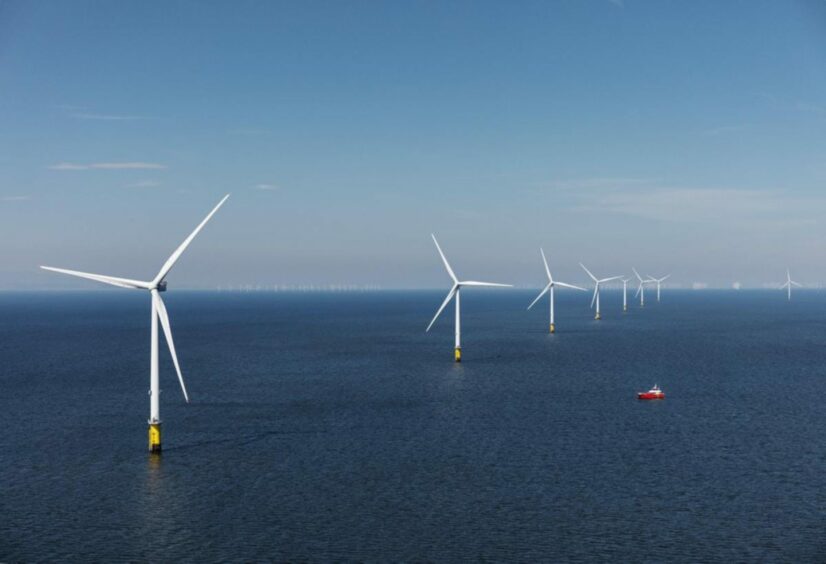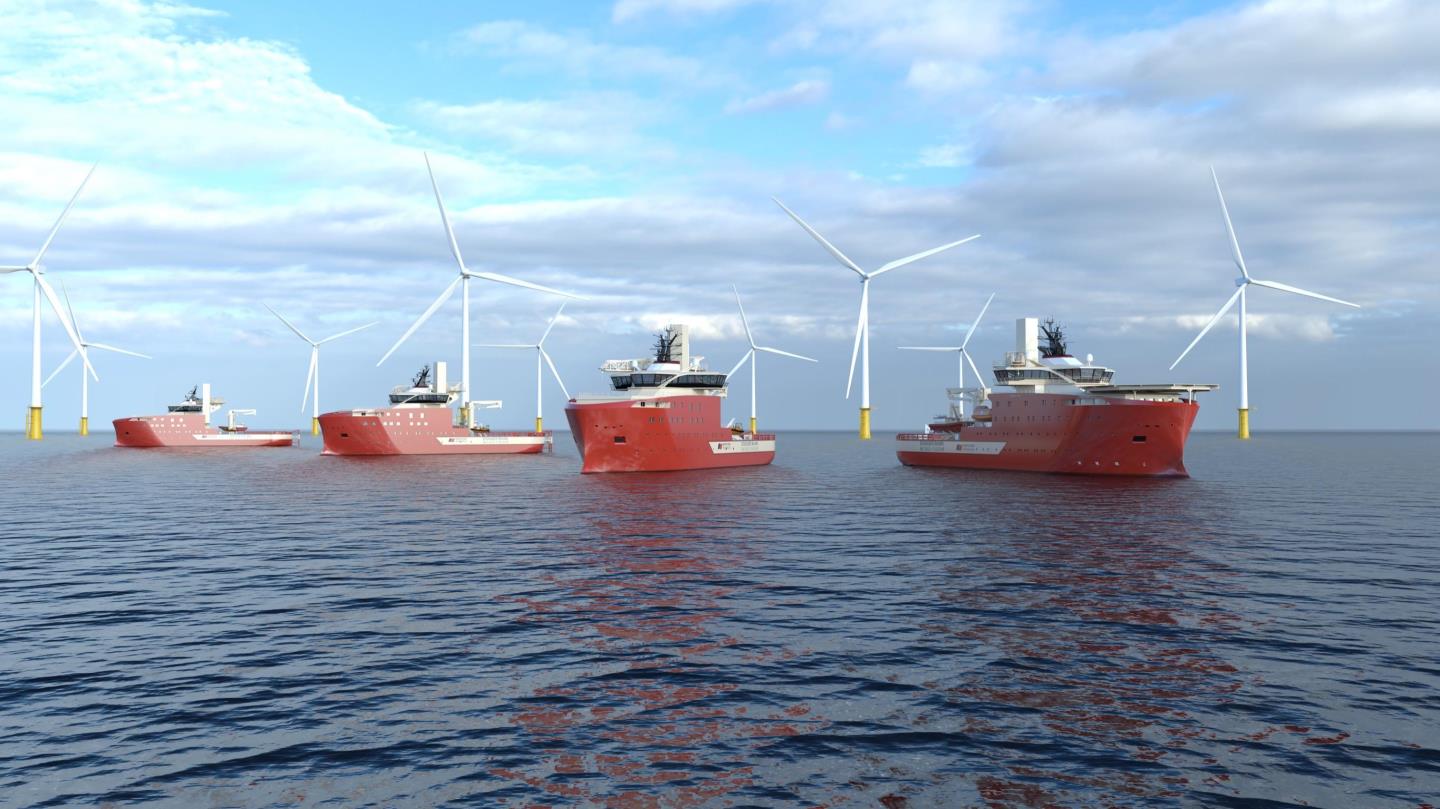
Developers secured support for nearly 7GW of offshore wind projects as part of the latest Contracts for Difference (CfD) auction, 1.4GW of which will be built in Scottish waters.
Offshore wind formed well over half of the 11GW of renewables capacity which won support in the fourth allocation round (AR4) of the UK’s flagship clean energy programme.
The Department for Business, Energy and Industrial Strategy (BEIS) said the volume was enough to increase the country’s overall capacity built and under construction by 35% and “a significant step” towards the country’s ambition to reach 50GW of offshore wind by 2030.
As highlighted by RenewableUK, the cost of offshore projects held at record lows in this auction, at strike prices of just £37.35 per megawatt hour (MWh).
The trade body noted it was “the lowest cost of all renewable technologies, and significantly cheaper than the current cost of electricity,” which has stayed above £150/MWh for much of the year – a point echoed by other industry analysts.
The record-low £37/MWh for offshore wind in today's UK auction result is all the more remarkable amid severe global commodity price inflation
(£44/MWh in current money) https://t.co/o7J7yzhCwn
— Simon Evans (@DrSimEvans) July 7, 2022
Scottish waters
Just under 1.4GW of the offshore capacity lies in Scotland across two major projects, with 1,080MW of capacity at the Inch Cape wind farm off the Angus Coast, and 294MW at Moray West in the outer Moray Firth both securing CfD support.
Comprised of 72 turbines around 9 miles off the Angus coast, Inch Cape is being co-developed by Edinburgh-based Red Rock Power and ESB.
Project Director Adam Ezzamel said: “This is an important milestone for the project, and testament to the great work of team which has completely re-engineered the wind farm over the last two years.
“Their work has resulted in a project with significantly greater output and a lower cost of energy, ensuring that we were able to submit a successful bid to the auction. Our focus now moves to the contracting of key work packages and progressing towards a final investment decision by the middle of next year.”
Meanwhile, up to 85 turbines have been consented at the 860MW Moray West scheme developed by the Ocean Winds consortium, a 50/50 joint venture between EDP Renewables and Engie.
The venture said that obtaining the CfD was a “key milestone” for project development, ahead of a final investment decision (FID) and financial close (FC) some time “in the coming months”.
First power is expected from scheme in 2024.
Project director Adam Morrison said: “I would like to thank both internal and external stakeholders involved in getting Moray West to this stage. Without the support we would not have been so successful in building a robust commercial project that underpins this successful bid.
“Securing the recently announced large-scale corporate PPA enabled the project to build a contracted revenue stack that reduced risks around the CfD process. We now look forward to taking Moray West through its construction phase and delivering significant economic opportunities for Scotland and the UK.”
However, just one floating wind project garnered CfD backing – the 32-MW Twin Hub demonstrator in the Celtic Sea – at a strike price of £87.30/MWh.
Hornsea 3
In English waters, Ørsted secured strike price support for its 2,852MW Hornsea 3 project, billed as the world’s “single biggest” offshore wind farm.
Located off the Yorkshire coast, the Danish developer expects to commission the wind farm in 2027. Part of the Hornsea zone, the Hornsea 1, 2 and 3 projects will cumulatively total more than 5 GW of capacity.
Ørsted said Hornsea 3 alone would support up to 5,000 jobs during its construction phase and up to a further 1,200 permanent jobs directly and in the supply chain over its operational life.
Deputy group CEO and chief commercial officer Martin Neubert said: “Offshore wind once again proves itself as a homegrown source of clean energy at large scale that will help the UK achieve its climate targets and increase energy independence while creating local jobs and industrial development.
“We remain fully committed to financial discipline. The strike price is inflation-indexed and the contract comes with a level of merchant flexibility. We have already secured capacity with key suppliers for around two thirds of Hornsea 3’s CAPEX.”
Mr Neubert said the group could also unlock “significant synergies” by harnessing its global portfolio view when looking at procurement, and by Hornsea 3’s size and location near to its existing east coast wind farms.
Supply chain impact
Scottish Renewables chief executive Claire Mack said the recent ScotWind round had already highlighted the country’s offshore wind potential, with nearly £25bn of investment and tens of thousands of jobs promised.
“The benefits to Scottish communities which stem from this will be transformational: projects which were recently awarded seabed leases have committed to invest in Scotland – and specifically in supply chain businesses – on a scale never seen before, in any industry,” she added.
This was echoed by the head of Aberdeen-headquartered vessel operator North Star, Matthew Gordon, who said the CfD announcement was “a great endorsement for the future of offshore wind in this country and for the opportunities it presents for businesses like ours and the next generation of seafarers.”
“The investment in our new renewables ship fleet has already created 170 job openings in the UK as well as having a similar sustainable impact on the UK technology companies with which we partner,” Mr Gordon added.
However, Ms Mack also cautioned that the CfD’s price-focused mechanism should be adapted to ensure the UK made the most of wider economic benefits, particularly in the supply chain.
“While these results are positive for Scotland it is important that government understands the reality of building projects at these very low prices. Industry has said for many years that it is committed to investing in the UK supply chain, where prices are generally higher,” she noted.
“Doing so is made much harder by the need to drive down costs in the Contracts for Difference mechanism’s competitive auction process and we would urge government to consider CfD reform away from pure cost reduction to ensure that resilience and sustainability can be embedded in the UK supply chain.”
Recommended for you

 © North Star
© North Star